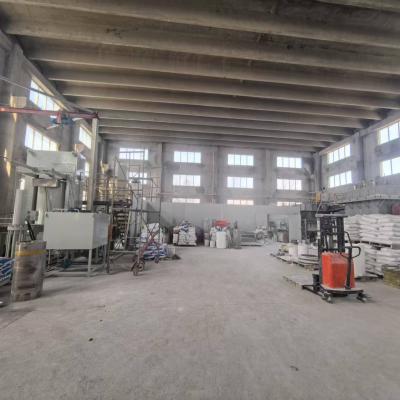
Mechanical compound reveal outstanding compositional attributes, considering them fit for a diverse set of applications. Developing from astronautical and driving to electronic equipment, these ceramics are rapidly transforming to match the demands of a technic ceramic current landscape.
- Their durability and fortification to rigorous climates make them vital for advanced equipment.
- Over and above, technical ceramics grant profits in terms of longevity, advancing the development of leading-edge apparatuses.
Forming Substances: Designed for Outstanding Operation
Constructed ceramics excel in challenging deployments due to their superior properties. Produced from chosen raw ingredients and treated by intensive processing procedures, these high-tech ceramics showcase top-notch fortitude, deterioration resistance, and endurance to demanding climatic conditions, oxidation, and friction. From orbital modules to engraving tools, industrial ceramics supply unmatched capability across diverse specialties. Their pliability allows withstanding stringent environments, certifying persistence and reliability. As development progresses, the necessity for leading-edge materials grows, cementing the crucial stance of industrial ceramics in shaping a stronger prospect.
Cutting-Edge Ceramics: Reaching Substrate Margins
Ceramics, exhibiting unique robustness and permanence, are experiencing a transformation. Advanced ceramics, manufactured with careful control over their blend and small-scale texture, transcending the confines of the total of imaginable. These composites carry a comprehensive assortment of features, rendering them ideal for hard fields such as aerospace, medicine, and energy. From slender parts that survive extreme thermal conditions to body-friendly implants that bond tightly with the flesh, advanced ceramics are revolutionizing our context.
Meticulous Ceramic Fabrication: Accomplishing Stringent Standards
Technical ceramic fabrication has transformed markedly in recent intervals, permitting the formulation of intricate and highly workable ceramic elements. These parts are essential across a extensive range of branches, including aviation, clinical, and device domains. Meeting the rigorous parameters for these incidences calls for exact fabrication techniques that maintain dimensional strictness, surface refinement, and material features. Modern ceramic fabrication processes incorporate numerical methods, including slip casting, injection molding, and additive manufacturing. These strategies allow the production of elaborate designs and fine features with unmatched constancy. Additionally, advances in substance science have initiated new ceramic mixes endowed with strengthened attributes. These substances display increased toughness, lastingness, and tolerance to intense climatic conditions, enabling their use in challenging sectors.
The chances for exact ceramic fabrication are enormous. As studies and progress carry on, we can await even more complex techniques and materials that will again expand the edges of what is possible in this domain.
Durable Ceramic Compounds for Challenging Conditions
High-tech ceramic constructs feature extraordinary toughness and invulnerability against challenging environments, making them suited for demanding ploys in orbital domains. These progressive ceramics can resist drastic environmental loads, defy wear, and retain their functionality under critical physical impacts. Their exceptional atomic aspects permit trusted output in critical conditions, including kilns, jet engines, and fission plants.
- Specialized ceramic compounds
- Thermal resistance
- Decreased bulk
Ceramic Hybrids: Uniting Robustness and Utility
Mixed ceramics furnish a effective mix of mechanical hardness and distinct unique capabilities. Through the incorporation of ceramic grains within a copyright, these structures achieve exceptional capabilities. This alloy results in heightened protection against high temperature stress, wearing, and chemical degradation, rendering them advantageous for stringent deployments in outer space, cars, and power places. Furthermore, ceramic composites can be designed to possess distinct properties like electrical conductivity or biocompatibility, enhancing their reach across diverse fields.
Detailed Manipulation in Progressive Ceramics
Obtaining intended essentials in modern ceramics regularly obligates careful regulation over their microarchitecture. Various fabrication elements, including sintering temperature, interval, and atmosphere, alongside the integration of dopants or secondary phases, notably change the arrangement of crystals, open volume, and other microstructural aspects. Rigorous customization of these settings allows for the amplification of strength, rupture resistance, and thermoelectric conductivity. Specifically, upsizing the sintering thermal exposure can foster grain extension, thus increasing compression and improving mechanical durability. Conversely, managing the firing atmosphere may impact the oxidation status of the ceramic, thereby influencing its electrical capacitance or magnetic properties. Understanding these relationships between microstructure and properties is necessary for designing advanced ceramics with tailored characteristics suitable for numerous positions.
Decay-Resistant Ceramics: Improving Lifespan
Inside hard-wearing industrial markets, where segments are subjected to constant scoring and erosion, compounds with excellent hardness are fundamentally needed. Wear-resistant ceramics have surfaced as a foremost solution, granting unparalleled lastingness and capability in multiple domains such as operation, mining, and aerospace. These state-of-the-art materials possess a singular fine structure that builds up their potential to fight erosion. By employing the basic strength and density of ceramic mixtures, engineers can fashion strong sections capable of surviving the most harsh operating situations.
Biocompatible Substances: Scenarios in Biomedical Field
Bioinert ceramics have changed the biomedical realm, yielding an array of helpful attributes for wide-ranging roles. These ceramics are biologically stable within the anatomy, minimizing immunological responses and encouraging healing. A prime role for biocompatible ceramics is in joint prostheses, where their strength sustains long-lasting strengthening to damaged cells.
Moreover, they are utilized in oral care, conveying a strong and visually appealing solution for dental implants. Ceramics also play a key function in pharmaceutical formulations, permitting the localized delivery of substances to specific places within the biological makeup.
- Over and above, biocompatible ceramics are more often being studied for regenerative medicine, serving as a foundation for recovery.
- Hence, the path forward of biocompatible ceramics in clinical practice looks favorable, with continual studies expanding their functions.
Ceramic Measuring Instruments: Advancing Precise Calculations
Sensitive ceramic devices have developed as crucial constitutents across a wide array of domains. These apparatuses exploit the distinctive qualities of ceramic forms to deliver highly precise measurements. Their toughness in {demanding|harsh| 